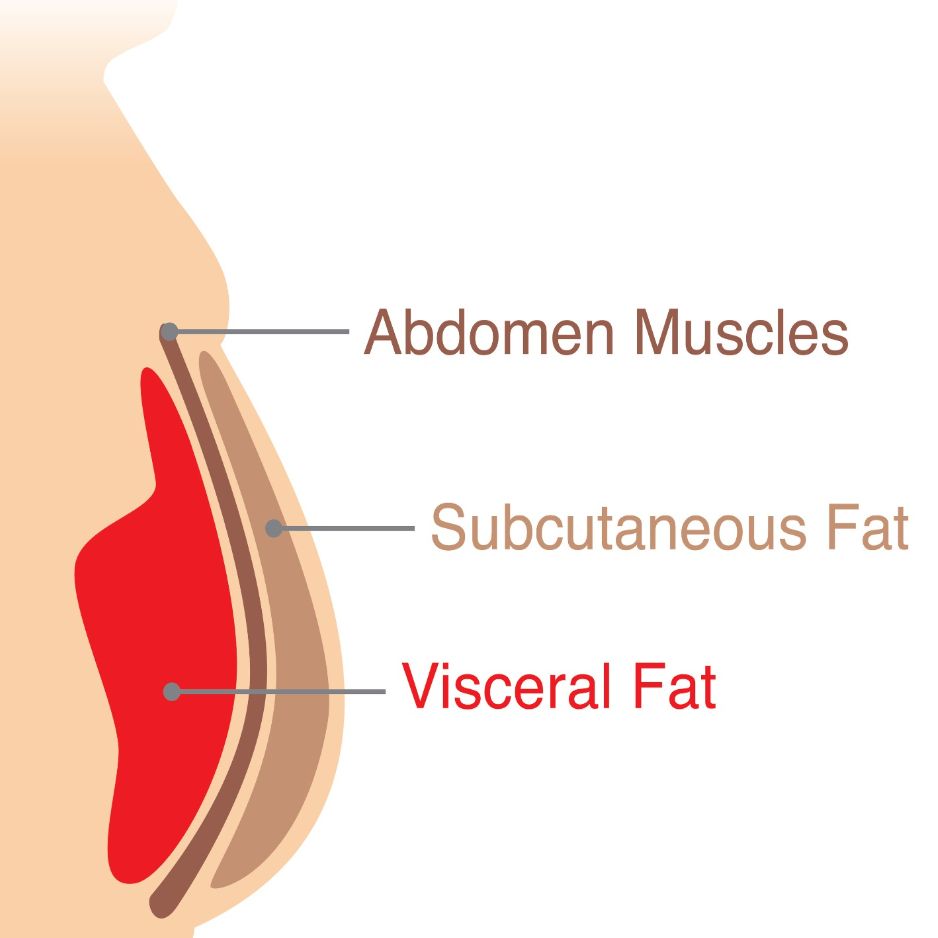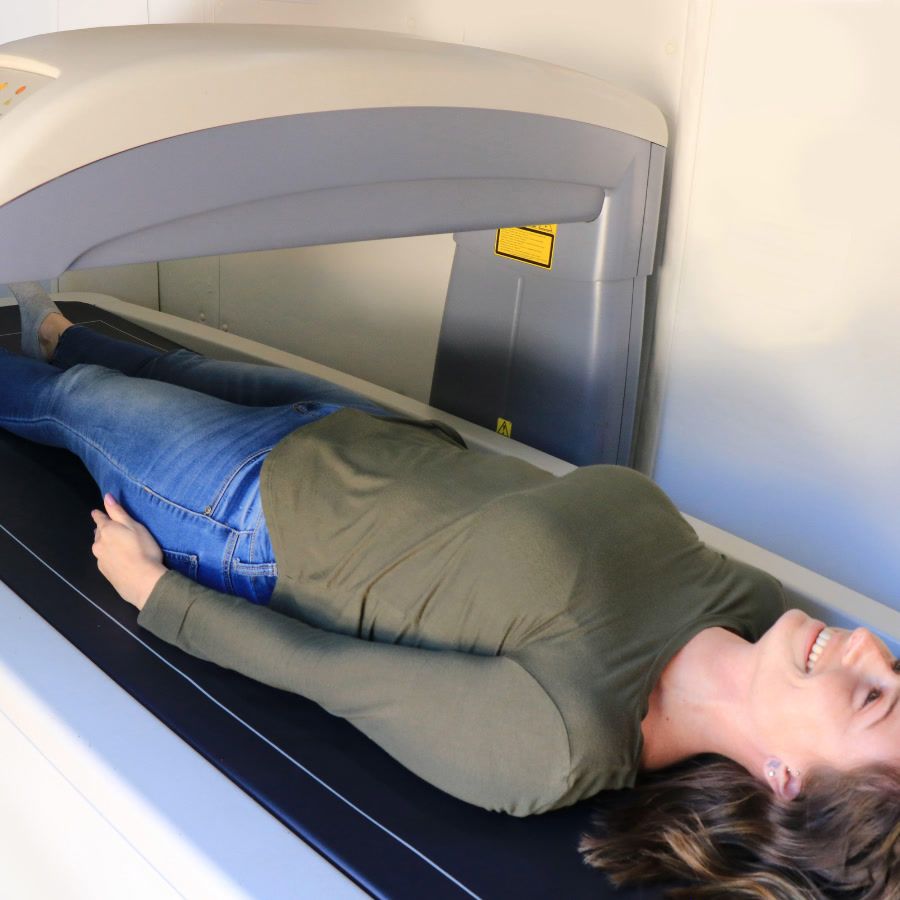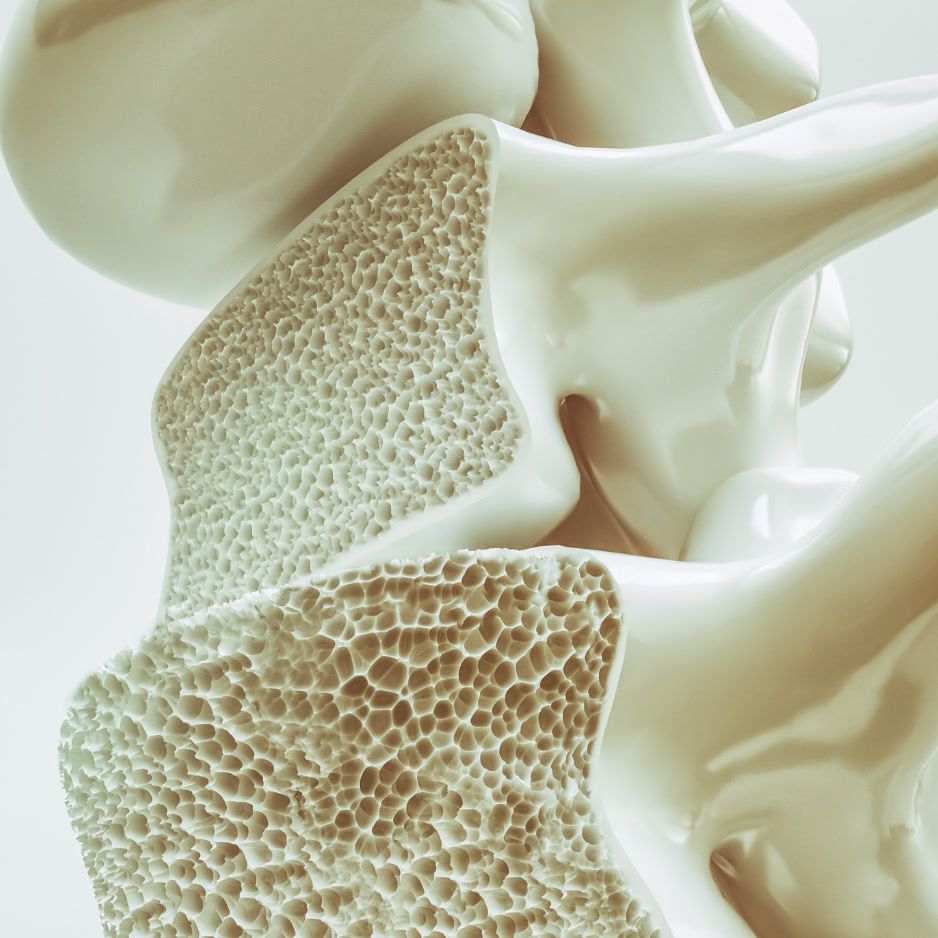TRX Exercises: 25 Moves for Every Fitness Level
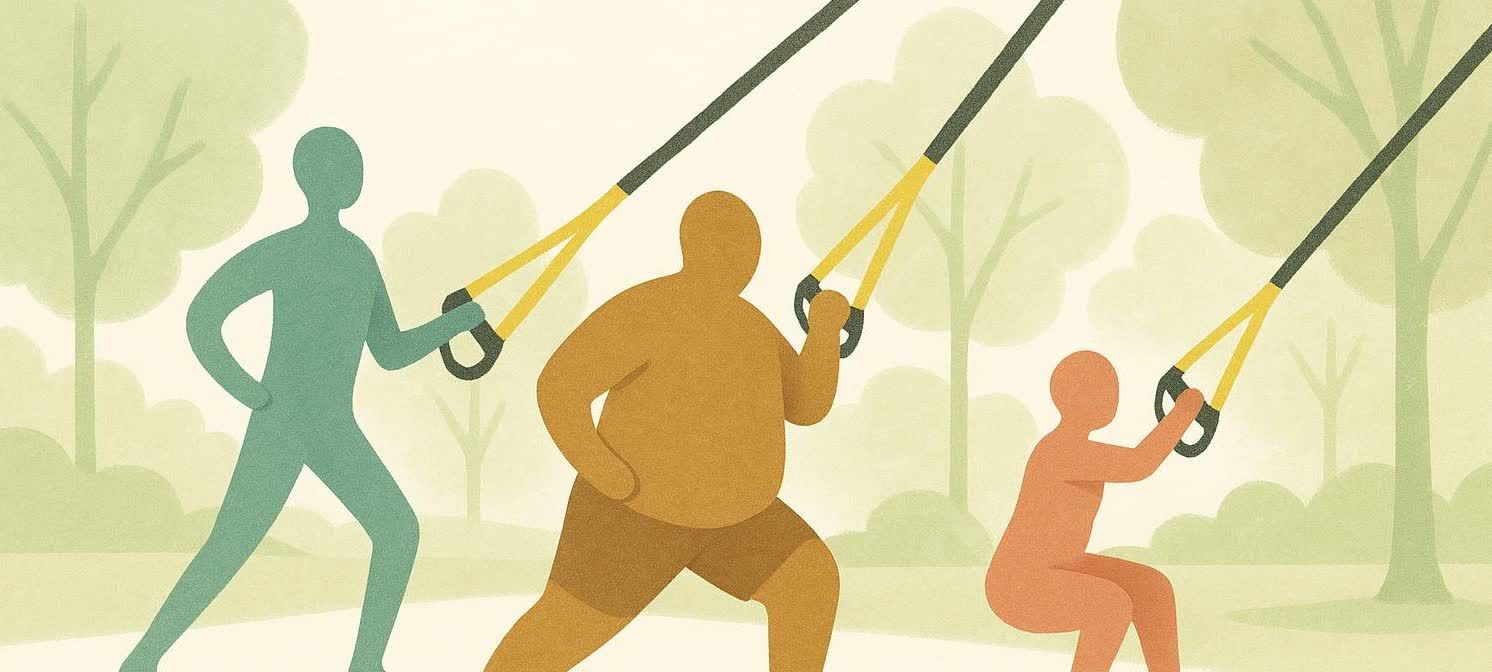
TRX Exercises: 25 Moves for Every Fitness Level
Table of Contents
- Why Trust TRX? Science-Backed Benefits
- Getting Set Up Safely
- How to Choose the Right Strap Length & Angle
- 25 Essential TRX Exercises
- Goal-Based TRX Workouts
- Progressions, Regressions & Programming Tips
- TRX vs. Free Weights vs. Bands
- FAQs
- Next Steps: Track Your Progress with BodySpec
Suspension training turns simple straps into a portable gym, letting you tweak body angle to dial intensity up or down instantly. Below, you’ll find evidence-backed benefits, safety setup tips, 25 detailed TRX moves, and plug-and-play workouts so you can build strength, stability, and endurance anywhere.
1. Why Trust TRX? Science-Backed Benefits
| Benefit | Evidence |
|---|---|
| Improves muscular strength & endurance | After eight weeks of three 60-minute weekly sessions, participants increased leg-press and bench-press 1-RM and performed more push-ups and curl-ups, according to the ACE-sponsored TRX health benefits study (2017). |
| Burns serious calories | The same ACE study recorded ≈400 kcal burned during a single 60-minute TRX session (MET ≈ 5.8, vigorous intensity). |
| Enhances balance & core stability | A 2024 peer-reviewed trial reported that nine suspension-training sessions improved both static and dynamic balance in healthy adults (MDPI — Effects of Suspension Training on Balance). |
| Joint-friendly & adaptable | A feasibility study in older adults found TRX safe and effective for boosting mobility and independence (TRX-OldAge pilot study – PMC). |
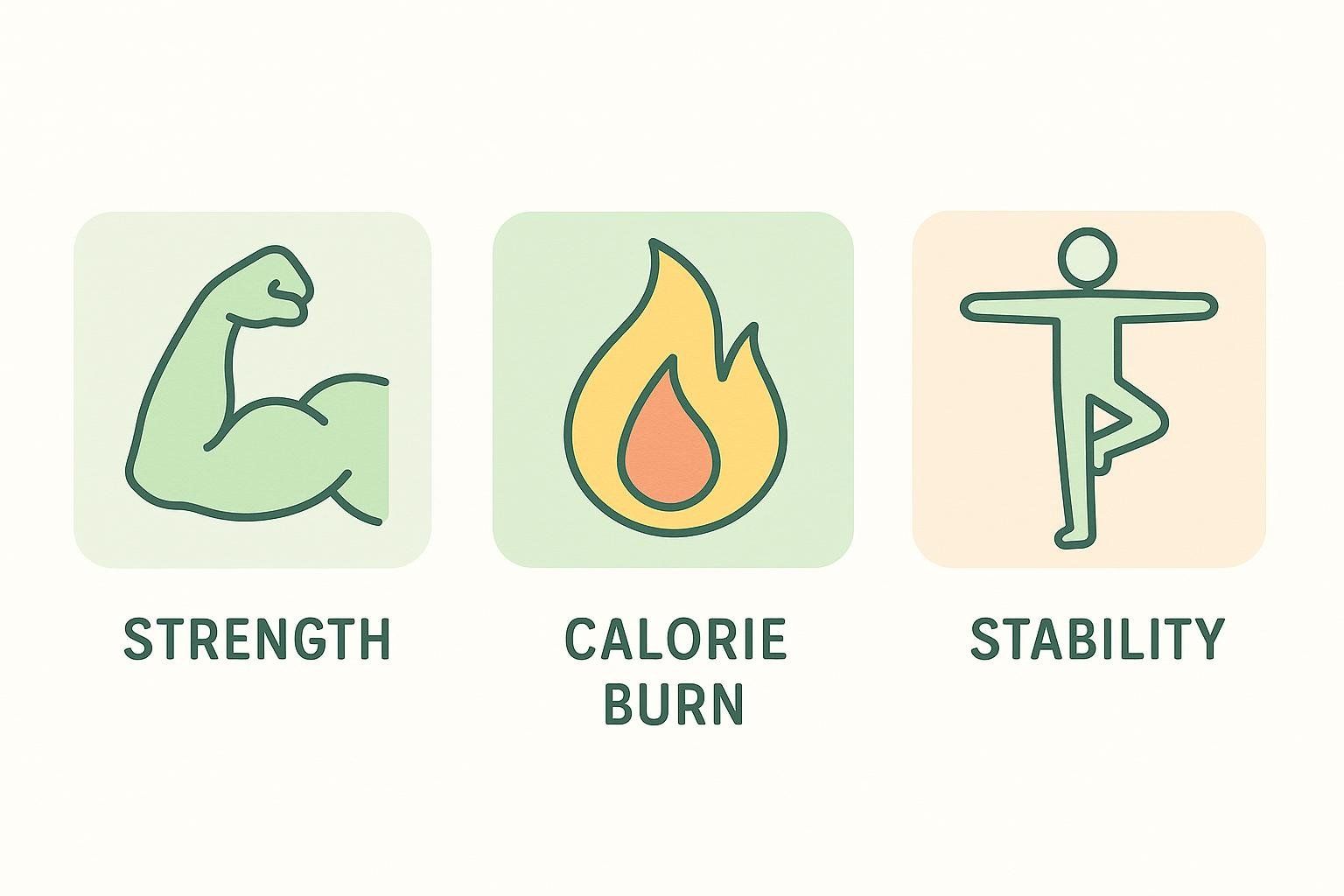
Visualize the straps as an “adjustable gravity lever.” Move your feet closer to the anchor to increase the load; step back to reduce it.
2. Getting Set Up Safely
- Anchor placement: Overhead point 7–9 ft high that can support 350 lb or more.
- Hardware check: Carabiners locked, stitching intact, straps untwisted.
- Clear space: At least one yoga-mat length behind you and arm span on either side.
- Neutral spine prep: Engage core, align ears-hips-ankles, and soften knees before every set.
Warm up first—try the quick drills in BodySpec’s mobility routine.
3. How to Choose the Right Strap Length & Angle
| Goal | Strap Length | Body Angle | Relative Intensity |
|---|---|---|---|
| Mastering form (beginner) | Mid-length | Tall plank (60–70°) | Low |
| Strength / muscle | Shorter straps | Steeper (30–45°) | High |
| Mobility / rehab | Long straps | Standing (80–90°) | Very low |
Pro tip: If you can’t perform 8 controlled reps, widen your stance or walk your feet back to decrease load.
4. 25 Essential TRX Exercises
A. Core (5 Moves)
-
TRX Plank
Setup: Straps mid-calf; feet in foot cradles; forearms on floor shoulder-width.
Action: Press forearms down, extend legs, and lift body to a straight line; hold 30–60 s.
Cues: Squeeze glutes, keep gaze between hands, avoid sagging hips. -
Body Saw
Setup: Start in TRX plank.
Action: Glide shoulders forward ~4 in, then pull back ~4 in while core stays braced.
Cues: Move from ankles; maintain neutral spine. -
Pike
Setup: High plank; feet in cradles; arms straight.
Action: Drive hips toward ceiling, drawing feet toward hands until torso forms an inverted “V”; return slowly.
Cues: Legs straight; press hands into floor; control descent. -
Knee Tuck
Setup: High plank with feet in cradles.
Action: Pull knees toward chest, pause, then extend legs back.
Cues: Back flat; shoulders over wrists. -
Oblique Crunch
Setup: Same as knee tuck.
Action: Pull knees toward right elbow; extend; repeat left.
Cues: Hips level; rotate from trunk, not shoulders.
B. Upper-Body Push (5 Moves)
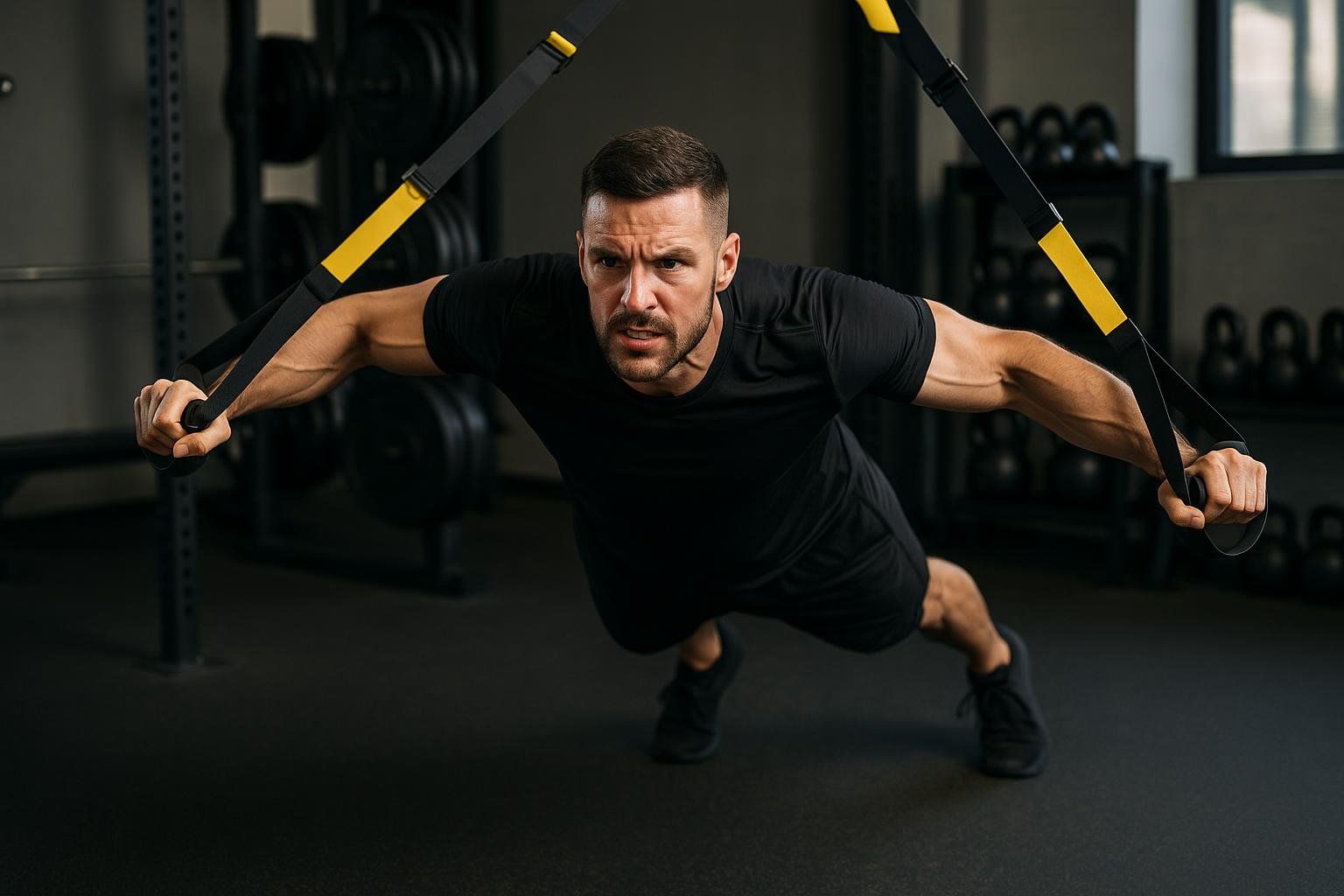
-
TRX Push-Up
Setup: Handles under shoulders; palms facing floor; body angled.
Action: Bend elbows to lower chest between hands; press back to start.
Cues: Elbows at 45°; core tight; straps clear arms. -
Atomic Push-Up
Setup: Feet in cradles; hands on floor.
Action: Perform push-up; at the top tuck knees to chest; extend legs to repeat.
Cues: Separate the push-up and tuck; prevent hip sag. -
Chest Fly
Setup: Arms long in front; palms facing; slight body lean.
Action: Open arms in wide arc until chest stretches; squeeze pecs to return.
Cues: Soft elbows; wrists neutral; control range. -
Triceps Press
Setup: Face away from anchor; arms overhead; elbows bent 90°; palms down.
Action: Extend elbows to push body away; return with control.
Cues: Upper arms still; think overhead skull crusher. -
Single-Arm Chest Press
Setup: One hand in handle; other on rib cage; body angled.
Action: Lower until elbow ≈ 90°; press back while resisting rotation.
Cues: Square hips/shoulders; widen stance if needed.
C. Upper-Body Pull (5 Moves)
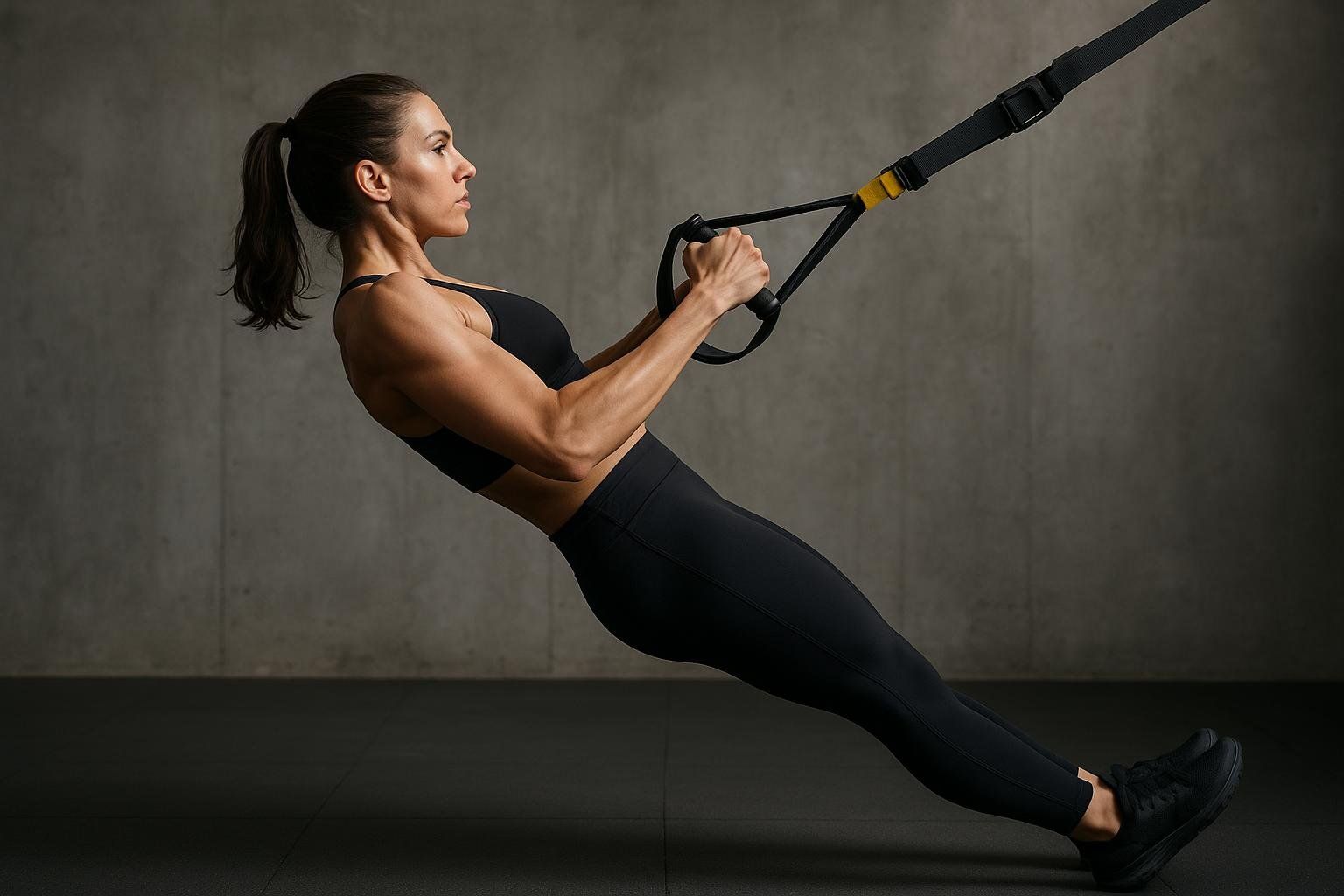
-
Low Row
Setup: Face anchor; handles at rib height; body leaned back.
Action: Drive elbows past torso, squeezing shoulder blades; extend arms slowly.
Cues: Body stays plank-straight; wrists neutral. -
High Row
Setup: Same lean; elbows start straight near eye level.
Action: Pull handles toward temples, flaring elbows to 90°; return.
Cues: Lead with elbows; pinch mid-back. -
Face Pull with External Rotation
Setup: Handles chest height; palms down.
Action: Pull toward face, then rotate thumbs upward to goal-post position; reverse.
Cues: Keep ribs down; feel rear delts. -
Biceps Curl
Setup: Palms face ceiling; elbows high in front.
Action: Curl handles to forehead, keeping elbows lifted; extend slowly.
Cues: Elbows fixed; hinge only at elbows. -
Single-Arm Row + Rotation
Setup: One handle; free arm across chest; body leaned.
Action: Row, then rotate torso toward anchor; reverse.
Cues: Initiate with lat; rotate from thoracic spine.
D. Lower Body (5 Moves)
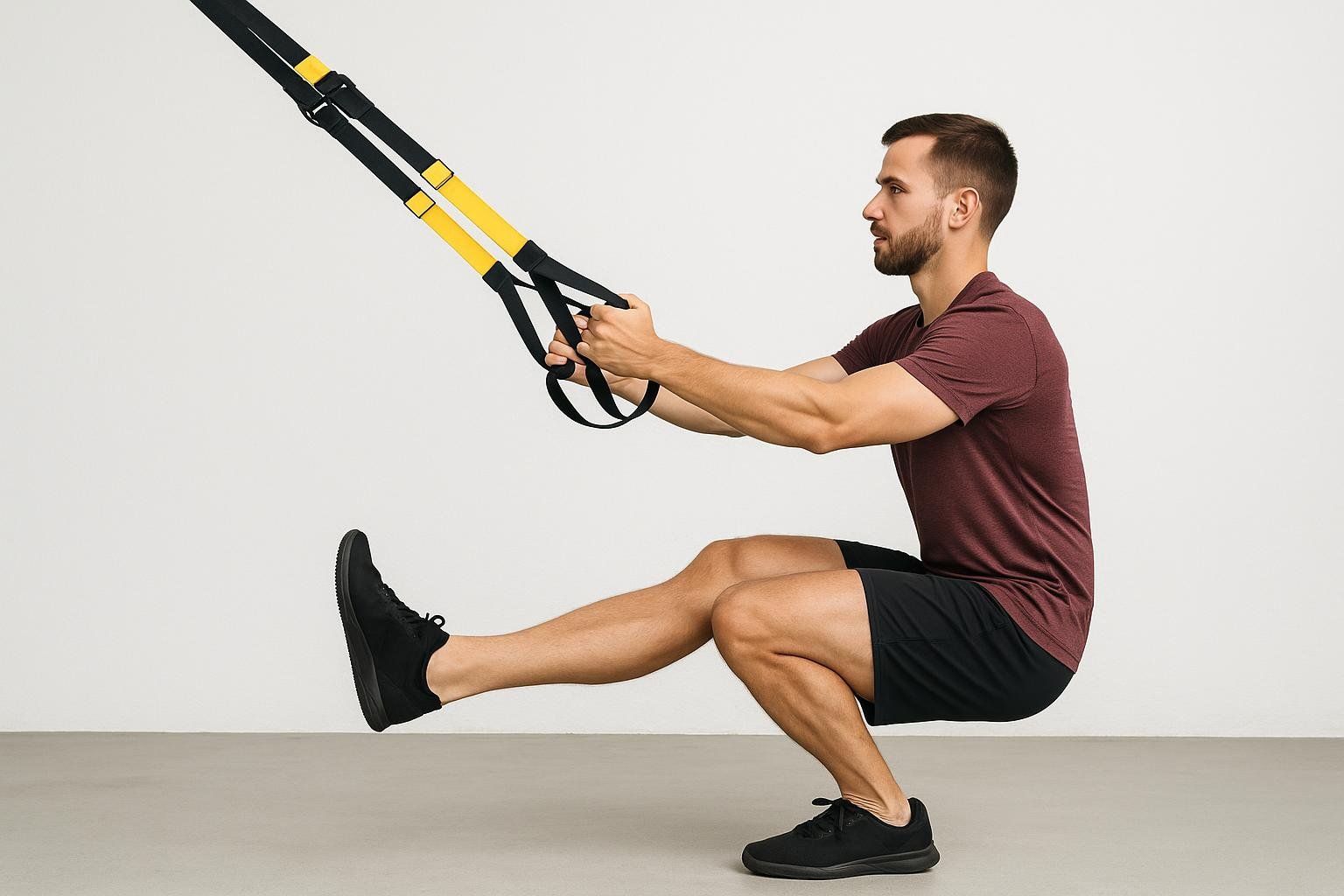
-
Assisted Squat
Setup: Face anchor; handles at waist; feet hip-width.
Action: Sit hips back below knee line using straps for balance; drive through heels to rise.
Cues: Chest tall; knees track toes; minimal arm pull. -
Pistol Squat
Setup: Hold handles; stand on one leg; other leg extended.
Action: Lower until working thigh parallel; push through heel to stand.
Cues: Knee over mid-foot; use straps as assistance only. -
Hamstring Curl
Setup: Lie supine; heels in cradles; knees bent 90°; hips bridged.
Action: Extend legs; curl heels toward glutes while keeping hips lifted.
Cues: Hips stay up; squeeze hamstrings. -
Reverse Lunge
Setup: Face anchor; handles lightly held; feet together.
Action: Step one leg back into lunge, front knee 90°; drive forward to start; alternate legs.
Cues: Torso upright; light strap assistance. -
Hip Abduction Plank
Setup: Feet in cradles; forearm plank.
Action: Spread legs apart, pause, then bring them together while maintaining plank.
Cues: Move from hips; spine neutral.
E. Power & Cardio (5 Moves)
-
Jump Squat to Row
Setup: Face anchor; slight lean.
Action: Drop into squat; explode up; land softly; immediately row to standing.
Cues: Absorb landing; flow seamlessly from jump to row. -
Sprinter Start
Setup: Face away from anchor; straps under arms; one foot forward.
Action: Drive rear knee forward, pushing into straps for 2–3 rapid hops; reset.
Cues: Forward lean; core tight; powerful drive. -
Burpee + Overhead Press
Setup: Stand facing anchor; handles at or just above head height.
Action: Release handles; drop to floor for a burpee (hands on floor, push-up, jump feet in); stand, re-grab handles, and press overhead explosively.
Cues: Use legs to assist press; keep shoulders down; land softly on the jump. -
Mountain Climber
Setup: Feet in cradles; hands under shoulders.
Action: Alternate knees toward chest rapidly.
Cues: Hips level; quick but controlled tempo. -
Pendulum Swing
Setup: Forearm plank; feet in cradles.
Action: Swing both legs together side-to-side in a tight, controlled arc.
Cues: Initiate from core; keep hips level and shoulders squared.
5. Goal-Based TRX Workouts
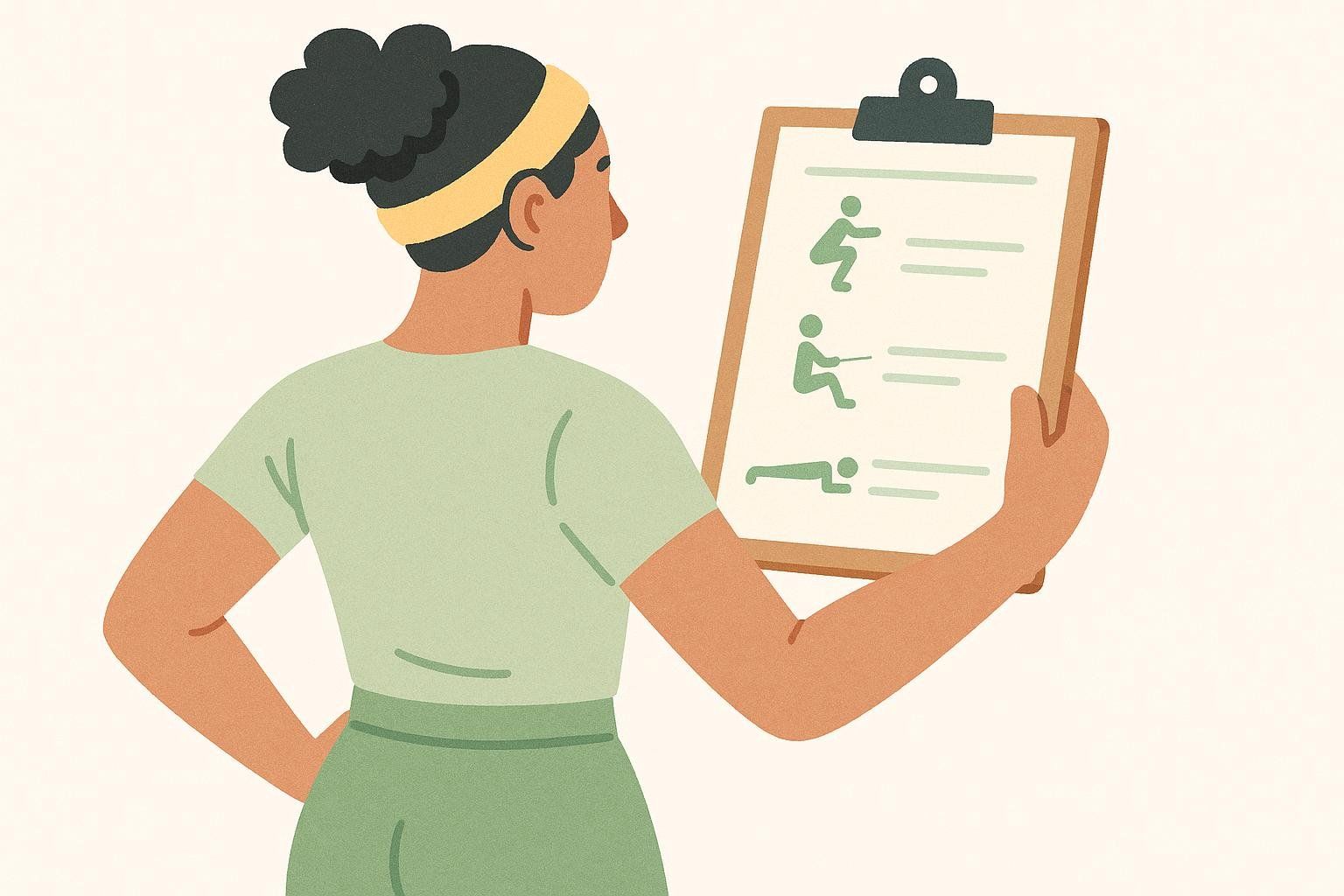
Beginner 20-Minute Circuit
| Exercise | Reps/Time |
|---|---|
| Assisted Squat | 12 |
| Low Row | 10 |
| TRX Plank | 30 s |
| Reverse Lunge | 8 / leg |
| TRX Push-Up | 10 |
| Repeat 3 rounds; rest 45 s between moves. |
Strength & Hypertrophy Split
- Day 1 – Push: TRX Push-Up, Chest Fly, Triceps Press, Pistol Squat. 4 × 6–10.
- Day 2 – Pull: Low Row, Biceps Curl, Hamstring Curl, Pike. 4 × 6–10.
Low-Impact Flow for Seniors / Rehab
- Assisted Squat 3 × 12
- Standing Hip Hinge 3 × 10
- Y-Fly 3 × 8
- Heel-to-Toe Balance Hold 3 × 30 s
- Hamstring Curl 3 × 8
HIIT Fat-Loss Blast
Work 40 s / Rest 20 s × 5 rounds:
Mountain Climber → Jump Squat Row → Sprinter Start (L) → Sprinter Start (R) → Atomic Push-Up.
6. Progressions, Regressions & Programming Tips
- Angle is overload. Walk feet closer to anchor to progress or back to deload.
- Tempo tweaks: 3-second eccentrics amplify muscle growth.
- Instability hacks: Elevate one foot or perform single-arm holds.
- Deload weeks: Reduce angle or volume every 4–6 weeks to recover.
- Frequency: 2–4 sessions/week safely hits full body without overuse.
Expand your knowledge with BodySpec’s four essential exercise types guide.
7. TRX vs. Free Weights vs. Bands
| Metric | TRX | Dumbbells/Barbell | Resistance Bands |
|---|---|---|---|
| Load range | Body-weight scalable | 2–1000 lb | 5–200 lb |
| Core activation | Very high | Moderate | Moderate |
| Joint stress | Low | Varied | Low |
| Portability | Straps (<2 lb) | Low | High |
| Cost | $$ | $$$ | $ |
Suspension straps fill a sweet spot many programs miss: high core demand, joint friendliness, and suitcase-ready portability.
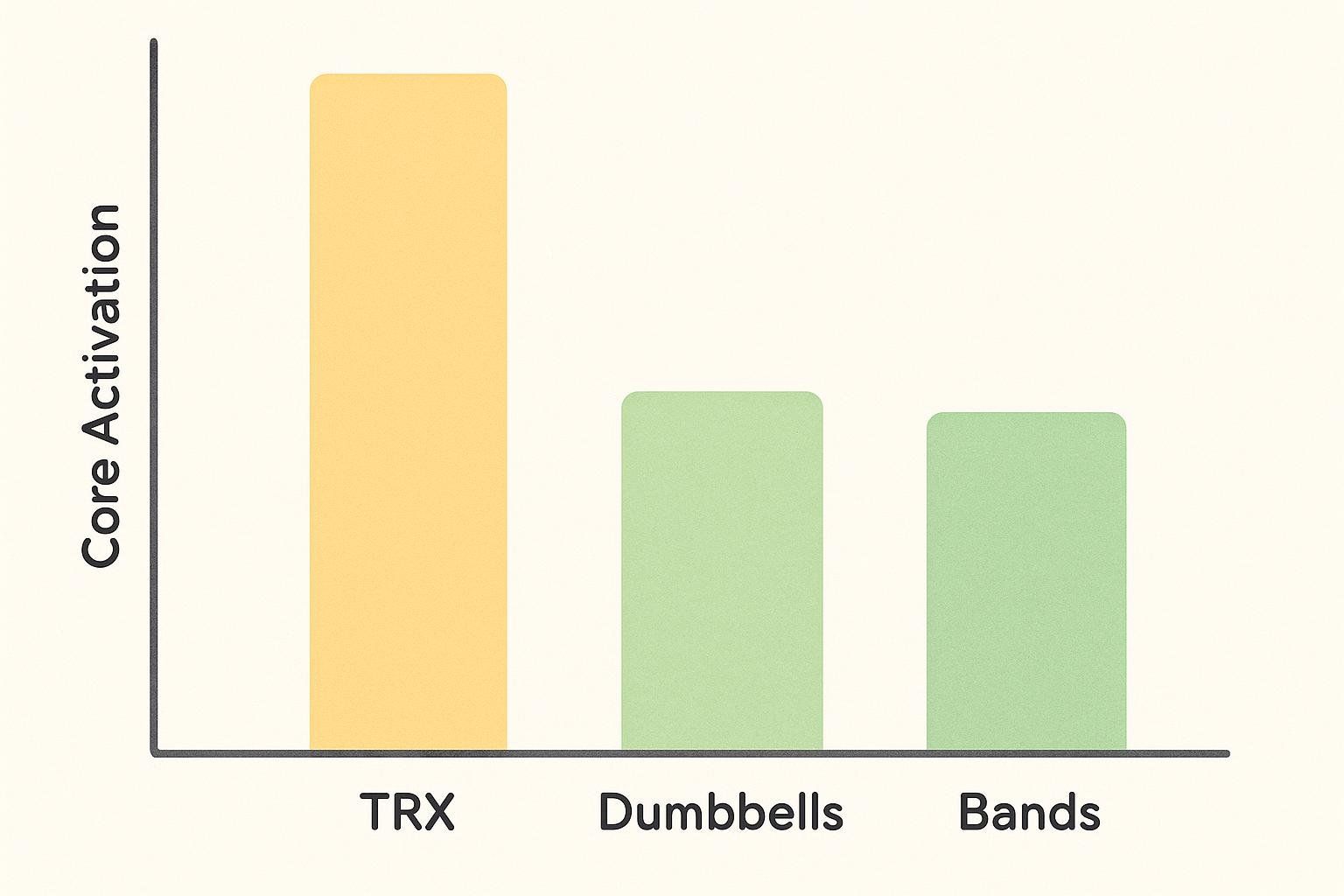
8. FAQs
Is TRX good for weight loss?
Yes. The 2017 ACE-sponsored study found ~400 kcal burned in one hour, plus muscle-building stimulus that elevates resting metabolism.
Can beginners use TRX?
Absolutely. Start with a shallow body angle and the Assisted Squat or Low Row.
Does TRX build muscle or just endurance?
The same ACE study reported significant increases in 1-RM strength and muscular endurance after eight weeks.
What muscles does TRX work most?
Core stabilizers fire on every rep, while specific exercises target chest, back, legs, and arms.
9. Next Steps: Track Your Progress with BodySpec
Suspension training can reshape your body—but you can’t manage what you don’t measure. A quick DEXA scan quantifies changes in fat, lean mass, and visceral fat.
Ready for a challenge? Try the Beginner 20-Minute Circuit twice this week, then schedule a BodySpec scan to see how functional training moves the needle.
